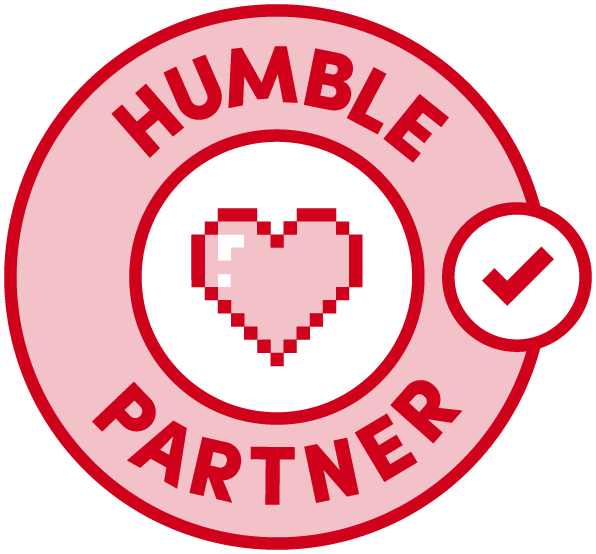What Makes An Interesting NPC? The Outer Worlds Devs Reveal Tricks Of The Trade
Who doesn’t love a good-old video game hero? The power, the glory, the gravitational pull that brings items, quests, and excitement your way–heroes make the game, right? Well, yes and no. In the case of The Outer Worlds, and plenty of other games from Obsidian Entertainment, you, AKA the hero, are rarely the most interesting person in the room. Obsidian is well known for crafting offbeat personalities and for writing clever dialogue that makes its RPGs almost endlessly entertaining, and the recent release of The Outer Worlds serves as a strong reminder why the team deserves that reputation.
We recently had the chance to sit down with narrative designer, Nitai Poddar, and co-game director, Leonard Boyarsky, to discuss what goes into the creation of an NPC at Obsidian. It’s no accident that characters like the Moon Man in The Outer Worlds wind up stealing the show, and to hear the two creators discuss their process, it’s evident that the people behind these memorable characters get just as much enjoyment out of them as we do.
If you’re still on the fence about giving Obsidian’s latest game a try, have a look at our Outer Worlds review by Edmond Tran, which goes into great detail describing what’s in store for the curious explorer.
Editor’s Note: The following interview has been lightly edited for better clarity and flow.
Where does the character creation process begin, and does Obsidian, as a whole, have a process for developing characters?
Boyarsky: I think it’s different for every project as well as different parts of the same project. In general we come up with an outline of what we want to do in general for the entire game. And then, you know, the setting generates some characters, the story you want to tell generates some character ideas. It all has to do with the confluence of events that lead you to that character. Characters should feel like they existed before then, so you have to place them in the world. It’s just kind of… we could start from any number of places for the actual character. You could start with a character you like from other media like a book or a movie, just a very basic idea. You know this is this character’s reason for existence, and just go from there.
Poddar: I think there are a couple things that Obsidian tries to do, studio-wise, as it relates to designing characters. I don’t know if other studios do this, but traditionally at Obsidian, not just for The Outer Worlds, but for previous games, a narrative designer usually has control of a companion. As the companions get written they are divvied among the narrative designers and we tend to pick one and take them in whatever direction we want. We also like to explore particular ideas in an area. If an area in The Outer Worlds, like the Groundbreaker, has a particular conflict, or Edgewater has a particular conflict, in order to explore that conflict we will craft a character who is deeply invested in that problem somehow. So there isn’t really a separation between character and area or character and story. They go hand in hand.
Are there any traits or tropes that are off-limits?
Boyarsky: Stuff that feels overdone, but sometimes taking something that’s overdone and doing it in a new way can be more interesting. You know, subverting player expectations. We always like to do things that feel a little different, that feel off-center, that you’re not going to see anywhere else. I would think anyone trying to tell good stories or create good characters would avoid flat characters–characters that just exist to get you to the next plot point.
Poddar: Yah if there is, I haven’t found it yet. The sign of a successful character is that people tend to like it or see the value in that character. Like you said, the characters we try to avoid are just RPG characters that have nothing to say and no real investment outside of their quest. I don’t really think we tend to think of our characters as tropes. We are more interested in motivation and what they have to say, their dialogue, and their personality.
How does the framework for what a character can be change between projects? I imagine the technical side of things must have an impact.
Boyarsky: Some stuff is determined by the structure of the game, whether its an isometric game–Pillars [Of Eternity] had a lot of narration as well as dialogue–but I think in general you can say the same thing for any of our games. It’s dictated by the needs of the story. You know: what would be a great character, what’s a great way within the context of that game to develop the character and express that to the player?
Poddar: Yeah, Pillars was definitely much more literary. You had a narrator, and that narrator could provide storytelling context, like the characters expression, or tone of voice through narration. We can’t really do that in our game, so we have to rely almost exclusively on what the character says, maybe sometimes what they look like or what gestures they give based on our animation. That’s pretty much the extent of it. They are two very different styles of game, isometric versus something that feels much more immersive in a first-person way. They engender different ways of making a character.
How do you maintain a level of quality and consistency when it comes to the range of characters and stories you’re trying to explore?
Poddar: We have a really experienced narrative design team. They’ve been doing this for a while. Some of that is just instinct at this point. They know how many options need to go into a particular conversation, what a well-fleshed-out NPC with lots of choices looks like.
I think we are also somewhat spoiled by our tools. The tools guys at Obsidian made just an incredible custom tool to manage conversations. It makes it so easy, relatively speaking, to put together this elaborate tree of choices, to block things off, to enable other options as they open up. Once you get used to it, it’s very easy to write. We are, to an extent, as good as our tools are.
Boyarski: Yeah, in the past I had to use Excel to write dialogue, which is…you start kind of throwing everything at the wall and pull your hair out as you’re trying to make the whole thing make sense and come together. This tool is a lot easier to use.
What are some of the unexpected ways you need to be creative in the face of technological constraints?
Poddar: I think our constraints are not so much limited by our tools, but self-imposed. For example: We have a budget for each character. Let’s say you have a character that must give you a particular quest, we need to use that budget of lines in a way that gets the quest to the player but we also have to have reactivity. What if the player is playing a character with low intelligence? We have to spend some of that budget on dumb dialogue choices. What if the player has completed the quest already before speaking to the NPC? We have to account for that. It’s very much a game of knowing exactly how much room you have to spend on an NPC and making the most of that.
What was the vision for Parvati, the first Outer Worlds companion, going into her development?
Boyarsky: She was written originally by Chris Latoi, and then taken over by Kate Dollarhyde. One of the things that I think is really great about Obsidian is that maybe we’ll have a general archetype for a character, or a place we want them to fit in the story, but after that, the writer is free to develop the character as they work on them. That’s the most organic way of creating interesting characters, you find stuff as you’re writing the character. So I wouldn’t want to put a lot of words in their mouths in terms of what they were trying to accomplish with her. As with all of our characters, we are trying to create interesting characters that are based off a specific archetype, but then they really become, hopefully, feeling like living and breathing characters that react to the situation you’re in, that react to the other companions or NPCs in the world. Parvati, for instance, she has a job that’s kind of demeaning to her–not the job itself, she loves the job of being a mechanic, but the boss she has is a little demeaning to her. She just wants to be able to experience the freedom of flying around the system. I thought she was a very well envisioned character.
Poddar: She was a favorite in the office. Now that the game is pretty much done and people are playing it all the way through, I get this comment a lot: hey, Parvati is awesome. People tend to love her and it’s not surprising to me that she is a favorite. She is designed to be likeable, she’s kind of the conscience of the party. She was inspired by a little bit by Kaylee of Firefly. The old line in describing Kaylee is that whatever Kaylee says, she is probably right. That is largely true to Parvati. It’s a dystopian setting where people tend to buy and sell their morality, but Parvati has a very strong center. She’s also the first companion you run into, so she’s kind of doing double duty in that we want to introduce the player to the concept of companions, rather than get them used to how the companions system works in combat and conversation. So she’s a good first companion to pick up because she’s so likeable.
Boyarsky: She’s really interesting in that we were looking at Firefly as one of our inspirations, but I feel like she kind of organically became a little bit like Kaylee. She actually has a similar job, she’s the mechanic, but we didn’t set out to make our companion who’s pretty much like her. She just started becoming more like her as we were developing her. It was very interesting. I still feel she has her own voice and characterization.
Is the process of developing the first companion drastically different than the others?
Poddar: It’s pretty different, because that companion now needs to be very closely tied with the first area that you explore, which is in and of itself a tutorial area. Everything in the Emerald Vale area is doing double duty. It has to function as a fun, complete area where you have a bunch of quests and content, that we’re introducing you to the setting, but it’s also the tutorial area. You get your first combat-related quest, we kind of slowly ramp you up. So, she has a lot more content that is closely tied to that area, more than say one of the other companions who would have in the areas that you find them.
Obsidian’s free-flowing RPG is currently available on PC, PS4, and Xbox One, where it’s included at no additional cost if you subscribe to Xbox Game Pass. For more insight into The Outer Worlds, and tips on how to get by as a fledgling interplanetary hero, check out our spoiler-free beginner’s guide.
from GameSpot – Game News https://www.gamespot.com/articles/what-makes-an-interesting-npc-the-outer-worlds-dev/1100-6471072/






Leave a Reply
Want to join the discussion?Feel free to contribute!